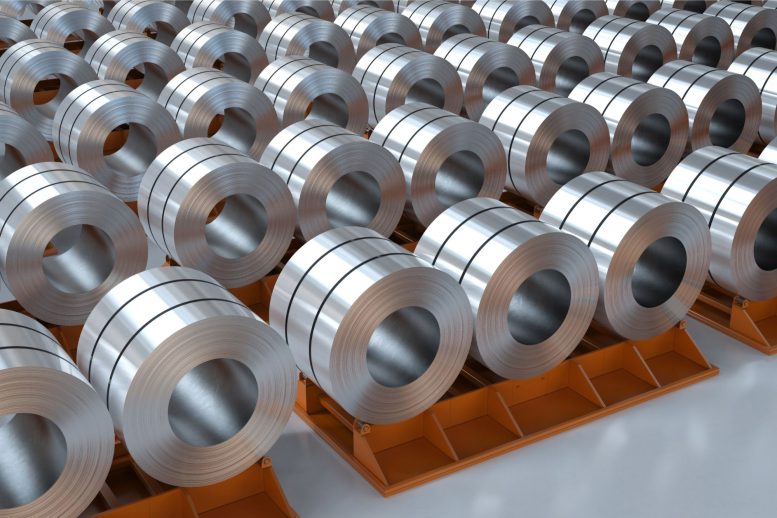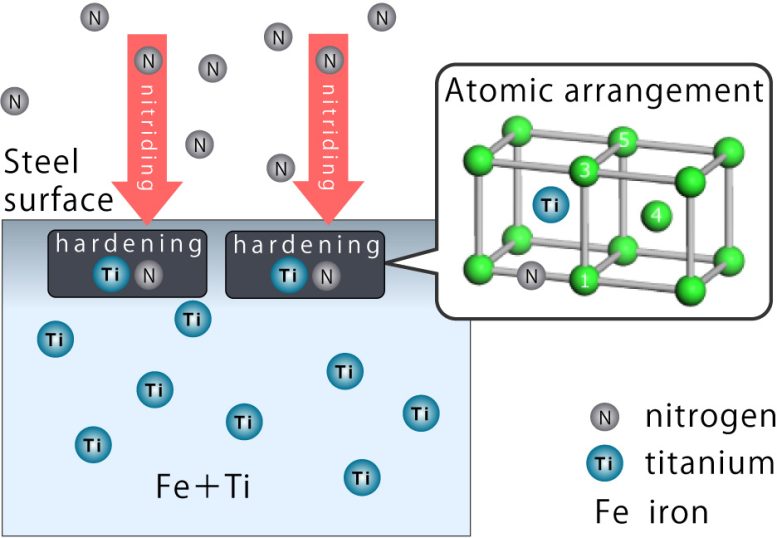
To advance automobile decarbonization, a research team at Osaka Metropolitan University analyzed how alloy elements like titanium improve steel’s performance by optimizing bonding processes, contributing to lighter, more durable electric motors.
Calculations explore how twelve metals, including titanium, form bonds with nitrogen or carbon.
Decarbonizing automobiles involves transitioning from gasoline engines to electric motors and incorporating high-quality steel components that reduce vehicle weight while ensuring efficient motor operation. High-performance steel materials can enhance the quietness of rides and withstand the wear from high-speed motor rotations. Optimizing the steel modification process, which involves enriching the surface with carbon, nitrogen, and 
Model of the stable configuration of nitrogen and titanium in steel of iron-titanium alloy. Credit: Osaka Metropolitan University
The results showed that when titanium is placed in a specific arrangement, it bonds with nitrogen or carbon, hardening the iron. The group’s analytical data also showed that the alloy element must have a larger metallic radius than the iron